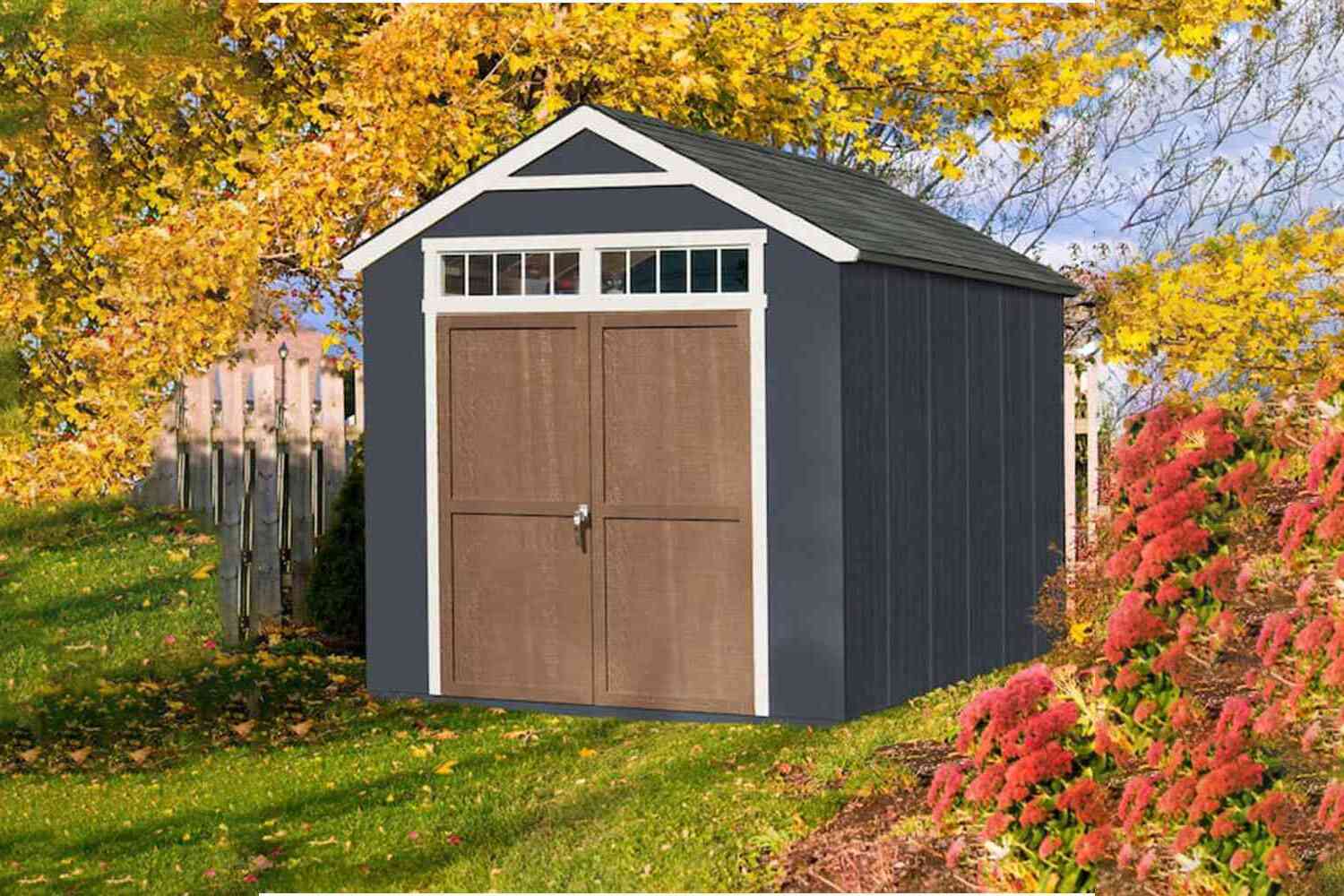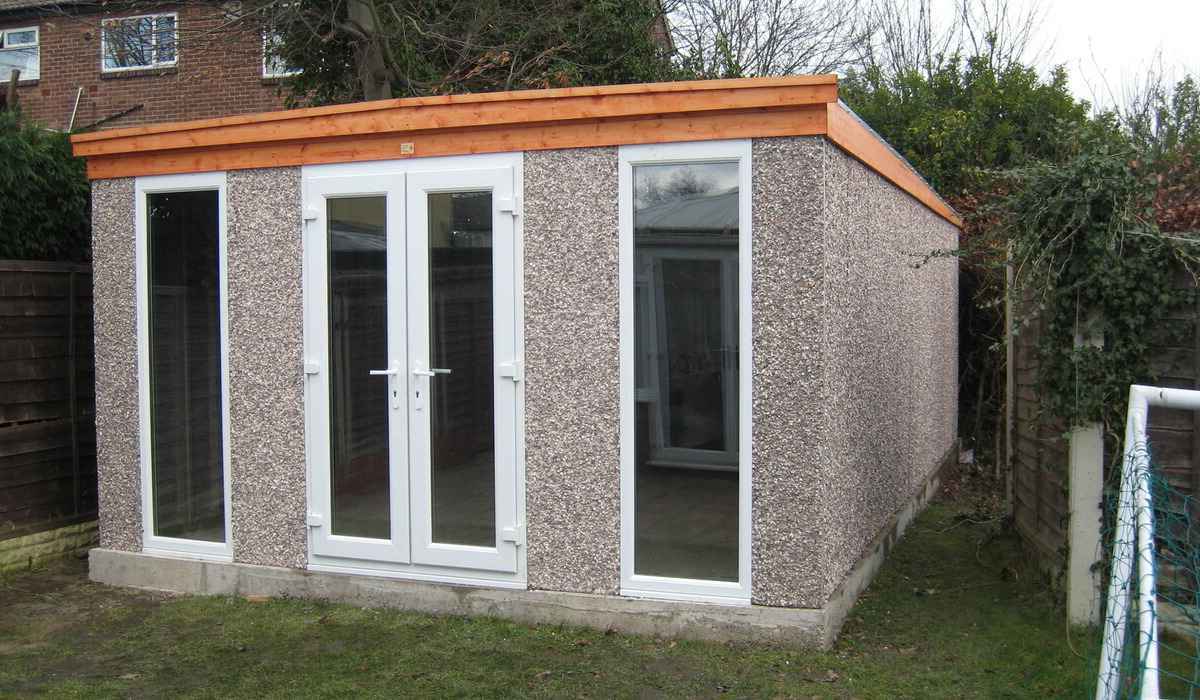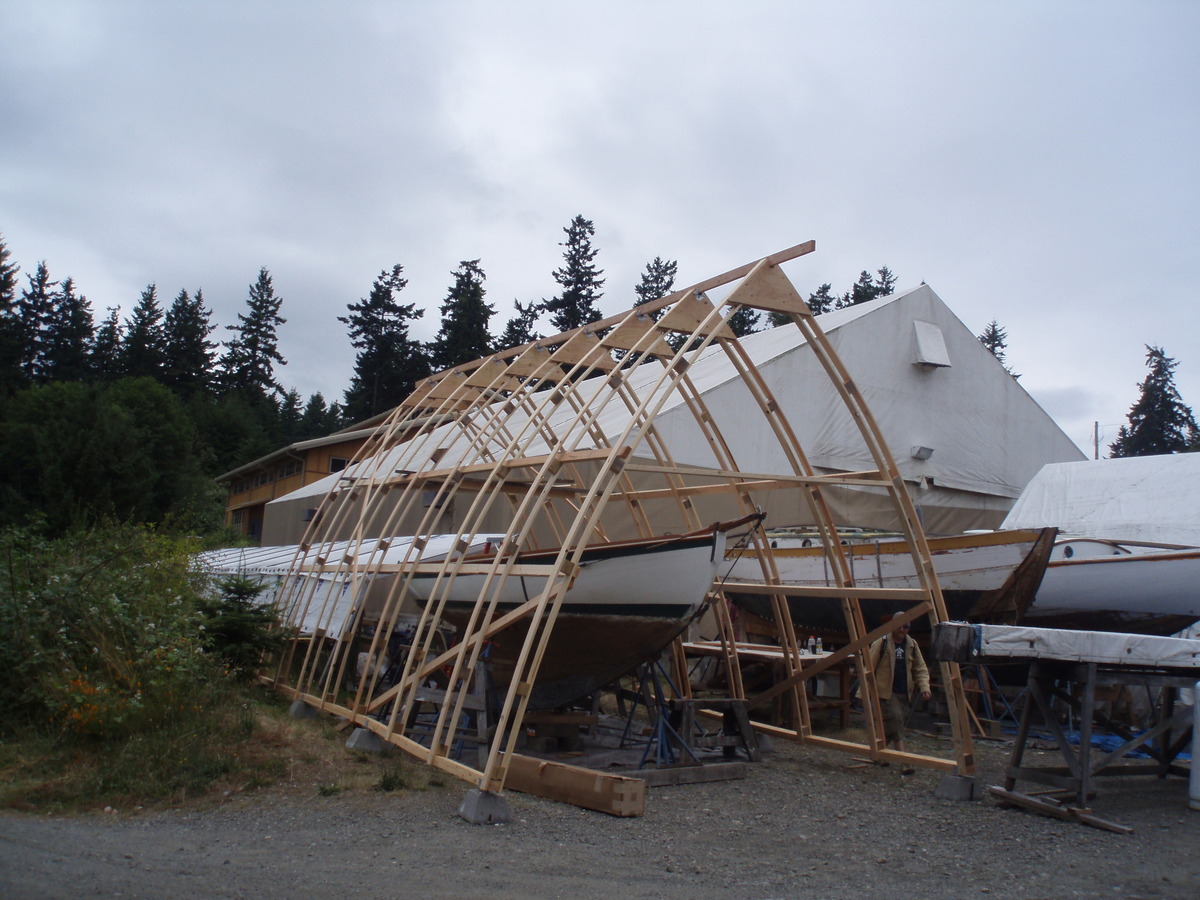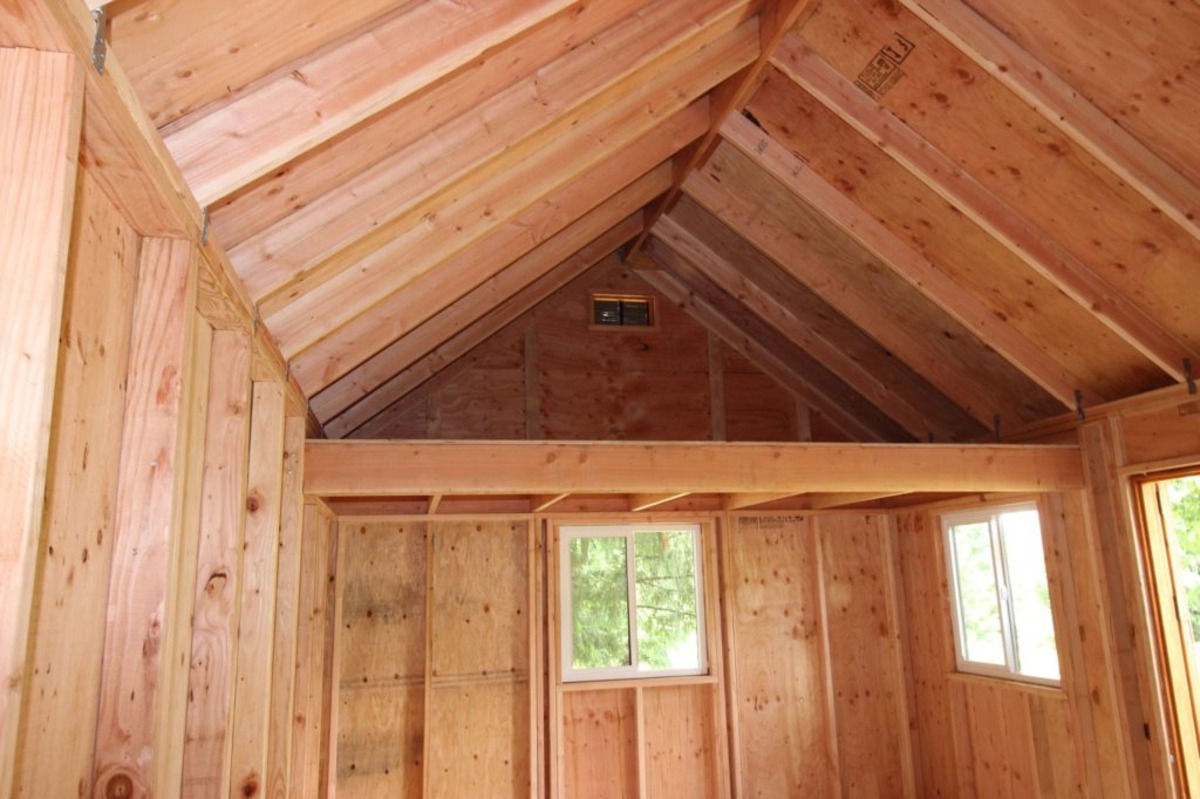Home>Create & Decorate>DIY & Crafts>How To Build A Cinder Block Shed
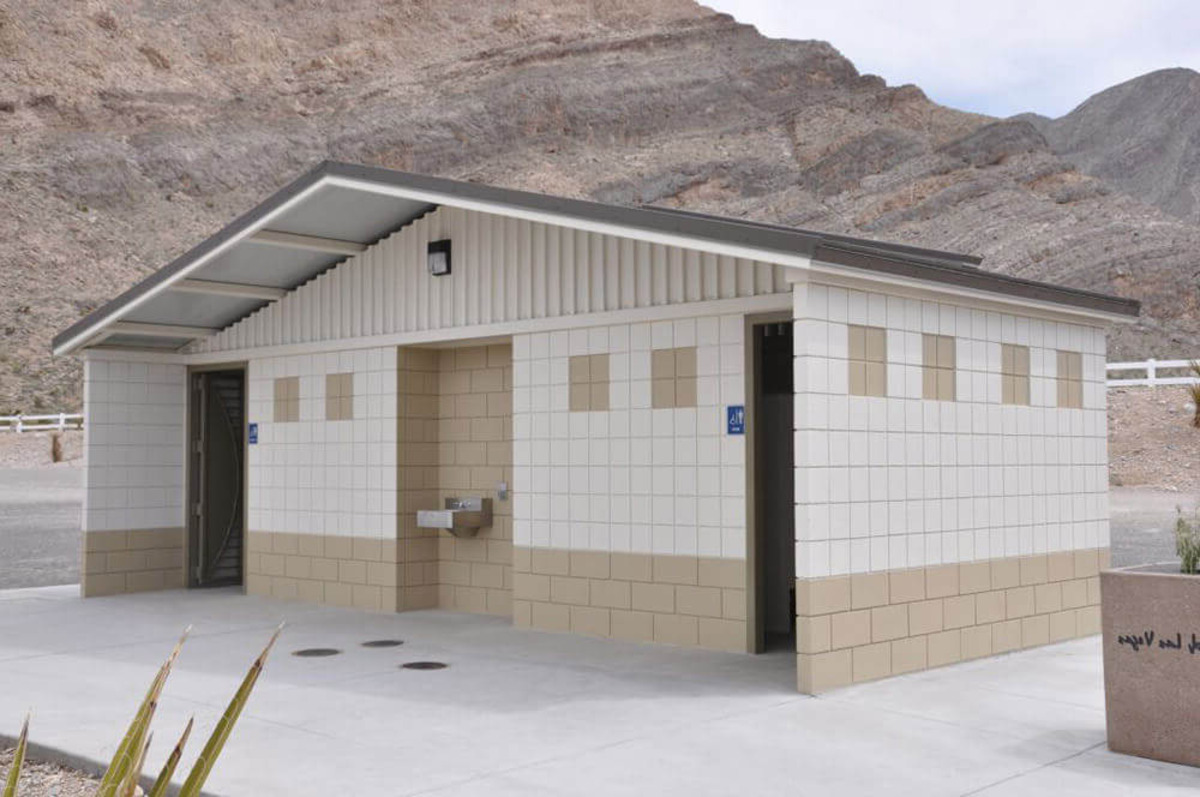

DIY & Crafts
How To Build A Cinder Block Shed
Published: February 29, 2024

Content Creator specializing in woodworking and interior transformations. Caegan's guides motivate readers to undertake their own projects, while his custom furniture adds a personal touch.
Learn how to build a DIY cinder block shed with our step-by-step guide. Perfect for your outdoor storage needs. Get started with our easy-to-follow instructions!
(Many of the links in this article redirect to a specific reviewed product. Your purchase of these products through affiliate links helps to generate commission for Twigandthistle.com, at no extra cost. Learn more)
Introduction
Building a cinder block shed can be a rewarding and practical DIY project that provides valuable storage space for your outdoor tools, equipment, and supplies. Whether you're a seasoned DIY enthusiast or a novice looking to embark on your first major construction endeavor, this comprehensive guide will walk you through the step-by-step process of creating a sturdy and functional cinder block shed.
Constructing a cinder block shed offers numerous benefits, including durability, affordability, and customization options. By utilizing readily available materials and simple construction techniques, you can create a structure that meets your specific storage needs while enhancing the aesthetic appeal of your outdoor space.
Throughout this guide, you'll learn how to plan and prepare for the project, gather the necessary materials and tools, and execute each phase of construction with precision and efficiency. From laying the foundation to adding the finishing touches, you'll gain valuable insights and practical tips to ensure the successful completion of your cinder block shed.
Whether you're aiming to declutter your yard, protect your gardening tools from the elements, or create a dedicated workspace for DIY projects, a cinder block shed can serve as a versatile and valuable addition to your property. By following the steps outlined in this guide, you'll be well-equipped to tackle this project with confidence and achieve a satisfying outcome that meets your storage needs and reflects your personal style.
Embark on this DIY journey with enthusiasm and determination, and let's begin the exciting process of building your very own cinder block shed.
Read more: How To Build Steps With Blocks
Step 1: Planning and Preparation
Before diving into the physical construction of your cinder block shed, meticulous planning and thorough preparation are essential to ensure a smooth and successful building process. This initial phase sets the foundation for the entire project, allowing you to clarify your objectives, assess your resources, and make informed decisions that will shape the shed's design and functionality.
Assessing Your Needs
Begin by evaluating your storage requirements and determining the specific purpose of the shed. Consider the types of items you intend to store, such as gardening tools, lawn equipment, or seasonal decorations. By understanding your storage needs, you can establish the shed's size, layout, and organizational features to accommodate your belongings effectively.
Research and Design
Explore various cinder block shed designs and gather inspiration from DIY resources, home improvement magazines, and online platforms. Take note of design elements that resonate with your preferences and align with the architectural style of your property. Create a rough sketch or utilize design software to visualize the shed's layout, including the dimensions, door placement, window options, and interior storage solutions.
Checking Local Regulations
Before proceeding with the construction, familiarize yourself with local building codes, zoning regulations, and permit requirements. Contact your municipal building department or local authorities to obtain information on any restrictions or guidelines that may impact the shed's location, size, height, and distance from property lines. Adhering to these regulations is crucial to avoid potential legal issues and ensure compliance with safety standards.
Setting a Budget
Establish a realistic budget for the project, factoring in the cost of materials, tools, permits, and any professional assistance you may require. Research the prices of cinder blocks, mortar, roofing materials, and other essential components to estimate the overall expenses accurately. Consider potential cost-saving measures and prioritize investments based on the shed's longevity and functionality.
Creating a Timeline
Outline a timeline that outlines the key milestones of the construction process, from site preparation to the final touches. Consider factors such as weather conditions, availability of labor, and any upcoming events that may impact your ability to dedicate time to the project. Setting a realistic timeline allows you to manage expectations and allocate sufficient time for each phase of construction.
By devoting ample time to planning and preparation, you lay a solid groundwork for the subsequent stages of building your cinder block shed. This thoughtful approach enables you to make informed decisions, anticipate potential challenges, and embark on the construction process with confidence and clarity.
Step 2: Gathering Materials and Tools
The successful construction of a cinder block shed hinges on the availability of the right materials and tools. By assembling a comprehensive inventory of essential items, you can streamline the building process and ensure that you have everything needed to bring your vision to life. Here's a detailed breakdown of the materials and tools required for this project:
Materials
-
Cinder Blocks: These durable, versatile building blocks form the foundation of the shed's structure. Calculate the quantity needed based on the shed's dimensions and design.
-
Mortar: A high-quality mortar mix is essential for securely bonding the cinder blocks and creating a stable foundation and walls.
-
Rebar: Reinforcing bars provide structural support and stability, especially for larger sheds or those located in areas prone to seismic activity.
-
Gravel and Sand: These materials are crucial for preparing the shed's foundation, ensuring proper drainage, and creating a level base for the cinder blocks.
-
Pressure-Treated Lumber: Use this for framing the shed's door and window openings, as well as for constructing the roof trusses and rafters.
-
Roofing Materials: Depending on your preference and local climate, options include asphalt shingles, metal roofing panels, or corrugated fiberglass sheets.
-
Doors and Windows: Select durable, weather-resistant options that complement the shed's design and provide adequate ventilation and natural light.
-
Fasteners and Anchors: Nails, screws, and anchors are essential for securing the cinder blocks, framing, and roofing materials.
-
Weatherproofing and Insulation: Consider adding insulation and weatherproofing materials to regulate the shed's temperature and protect its contents from moisture and extreme weather conditions.
Read more: DIY Knife Block: How to Build Your Own
Tools
-
Masonry Trowel: This tool is indispensable for applying mortar and ensuring proper adhesion between the cinder blocks.
-
Level: A reliable level is essential for ensuring that the shed's foundation, walls, and roof components are perfectly aligned and plumb.
-
Circular Saw: Use a circular saw for cutting lumber, plywood, and roofing materials to the required dimensions with precision.
-
Hammer and Drill: These versatile tools are essential for driving nails, screws, and anchors into place and creating openings for doors and windows.
-
Measuring Tape: Accurate measurements are crucial throughout the construction process, making a quality measuring tape indispensable.
-
Safety Gear: Prioritize safety by equipping yourself with gloves, safety goggles, and a dust mask to protect against potential hazards during construction.
By procuring these materials and tools, you'll be well-prepared to embark on the construction of your cinder block shed. Ensuring that you have everything on hand before commencing the project minimizes delays and allows for a more efficient and organized building process.
Step 3: Site Preparation
Proper site preparation is a critical precursor to the construction of a cinder block shed. By meticulously preparing the chosen location, you can establish a stable and level foundation, optimize drainage, and create an environment conducive to the long-term durability of the structure. Here's a comprehensive overview of the essential steps involved in site preparation for your cinder block shed:
Clearing the Area
Begin by clearing the designated site of any debris, vegetation, or obstructions. Remove rocks, tree roots, and other impediments that could compromise the shed's foundation or impede the construction process. Clearing the area ensures a clean and unobstructed canvas for laying the shed's foundation and positioning the cinder blocks.
Marking the Layout
Using stakes, string, and a measuring tape, mark the layout of the shed on the cleared site. Accurately outline the dimensions of the shed, including the walls, door openings, and any additional features such as windows or overhangs. This step provides a visual guide for excavating the foundation and positioning the cinder blocks with precision.
Read more: How To Build A Shed
Excavating the Foundation
Excavate the marked area to create a level foundation for the shed. The depth of the excavation will depend on the frost line in your region and the desired height of the shed. Remove soil and debris to achieve a uniform depth, ensuring that the foundation will adequately support the weight of the cinder blocks and the structure as a whole.
Compacting the Soil
After excavating the foundation, thoroughly compact the soil to enhance its stability and load-bearing capacity. Utilize a plate compactor or hand tamper to achieve a firm and level surface. Compaction minimizes the risk of settling or shifting over time, providing a solid base for the cinder block walls and ensuring the structural integrity of the shed.
Installing Drainage
Incorporate proper drainage measures to prevent water accumulation around the shed. Consider grading the surrounding terrain to direct water away from the foundation, or install a French drain system to manage excess moisture effectively. Adequate drainage safeguards the shed against water damage and helps maintain a dry and functional interior space.
Verifying Alignment and Levelness
Before proceeding to the next phase of construction, verify that the excavated foundation is precisely aligned and level. Utilize a string level, builder's level, or laser level to confirm that the foundation's dimensions and orientation align with the shed's design plans. This meticulous attention to detail ensures the accuracy and stability of the shed's base.
By meticulously executing these site preparation steps, you establish a solid foundation for the subsequent stages of building your cinder block shed. This thoughtful approach sets the stage for seamless construction and contributes to the long-term resilience and structural integrity of the completed structure.
Read more: How To Build A Portable Shed
Step 4: Laying the Foundation
The foundation serves as the backbone of a cinder block shed, providing essential support and stability for the entire structure. The meticulous process of laying the foundation involves strategic placement of materials and precise execution to ensure a level and durable base. Here's a detailed exploration of the key steps involved in this foundational phase of the construction process.
Setting the Footings
Commence the foundation laying process by establishing the footings, which are essential for distributing the shed's weight and preventing settling or shifting over time. The footings typically consist of concrete pads or piers strategically positioned to support the cinder block walls and the structure's load. Ensure that the footings are accurately spaced and aligned according to the shed's design plans, taking into account the anticipated weight and dimensions of the structure.
Applying the Mortar
With the footings in place, it's time to apply mortar and begin laying the cinder blocks. Prepare a high-quality mortar mix to ensure strong adhesion and stability. Using a masonry trowel, apply a generous layer of mortar on the footing where the first row of cinder blocks will be positioned. The mortar acts as a bonding agent, securing the blocks in place and creating a solid connection between the foundation and the shed's walls.
Positioning the Cinder Blocks
Carefully position the cinder blocks on the mortar-covered footing, ensuring that they are level, aligned, and tightly nestled against one another. Utilize a level to verify the horizontal and vertical alignment of each block, making necessary adjustments to maintain precision and uniformity. As you progress with laying the blocks, periodically check for consistency in alignment and ensure that the foundation's dimensions correspond to the shed's design specifications.
Read more: How To Build Shed Foundation
Reinforcing with Rebar
For added structural reinforcement, consider incorporating rebar into the foundation. Insert rebar vertically into the hollow cavities of the cinder blocks, allowing them to extend into the footing and subsequent rows of blocks. This reinforcement enhances the foundation's strength and resilience, particularly in regions prone to seismic activity or soil movement. Secure the rebar in place to ensure it effectively reinforces the foundation and contributes to the shed's overall stability.
Curing and Inspection
Once the cinder blocks are in position and the mortar has set, allow sufficient time for the foundation to cure and attain optimal strength. Periodically inspect the foundation to confirm that the mortar has fully cured and that the blocks are securely bonded to the footings. This critical phase sets the stage for the subsequent construction of the shed's walls and ensures that the foundation provides a solid and reliable base for the structure.
By meticulously executing the process of laying the foundation, you establish a robust and level base for the cinder block shed, setting the stage for the seamless progression of the construction process. This foundational phase forms the bedrock of the structure, laying the groundwork for the subsequent stages of building the shed with precision and structural integrity.
Step 5: Building the Walls
With the foundation securely in place, the construction of the cinder block shed progresses to the pivotal phase of building the walls. This stage involves meticulous placement of cinder blocks, precise application of mortar, and strategic incorporation of reinforcing elements to establish sturdy and resilient walls that form the framework of the structure.
Laying the First Course
Commence the wall-building process by laying the first course of cinder blocks on the foundation. Apply a generous layer of mortar on the foundation where the blocks will be positioned, ensuring a strong and secure bond. Carefully place the blocks, verifying their alignment and levelness with a reliable mason's level. This initial course serves as the foundation for the subsequent layers, setting the tone for the overall stability and uniformity of the walls.
Read more: How to Build a Butcher Block Island
Staggered Block Placement
To enhance the structural integrity of the walls, employ a staggered block placement pattern for successive courses. This technique involves positioning the blocks so that their joints are offset from the courses above and below, creating interlocking and cohesive walls. Staggering the blocks distributes the load evenly and minimizes the risk of vertical cracks, contributing to the overall strength and durability of the shed.
Applying Vertical Reinforcement
Incorporate vertical reinforcement within the walls to fortify their resilience and resistance to external forces. Insert rebar vertically into the hollow cores of the cinder blocks, ensuring that the reinforcement extends from the foundation to the top of the walls. This reinforcement strategy bolsters the walls against potential lateral movement and seismic activity, providing added stability and structural support.
Securing Corner Blocks
As the walls take shape, pay special attention to the placement of corner blocks to maintain precise alignment and ensure the squareness of the structure. Utilize a framing square to verify the right angles at the corners, making necessary adjustments to guarantee the integrity and uniformity of the walls. Accurate positioning of corner blocks is essential for the overall symmetry and stability of the shed.
Finishing the Wall Courses
Continue laying successive courses of cinder blocks, meticulously applying mortar and verifying the alignment and levelness of each block. Periodically check the vertical and horizontal alignment of the walls, making adjustments as needed to maintain uniformity and structural integrity. As the wall courses progress, ensure that the walls attain the desired height and align with the shed's design plans.
By methodically building the walls with precision and attention to detail, you establish a robust and resilient framework for the cinder block shed. This phase sets the stage for the subsequent installation of the roof and the completion of the structure, marking a significant milestone in the construction process.
Read more: How To Build An Office Shed
Step 6: Adding the Roof
The addition of the roof marks a pivotal phase in the construction of a cinder block shed, as it not only provides essential protection from the elements but also contributes to the structural integrity and aesthetic appeal of the structure. The process of adding the roof involves strategic planning, precise installation of roofing materials, and meticulous attention to detail to ensure a durable and weather-resistant covering for the shed.
Selecting Roofing Materials
Before commencing the roof installation, carefully consider the available roofing materials and their suitability for the shed's design, local climate, and your personal preferences. Common options include asphalt shingles, metal roofing panels, and corrugated fiberglass sheets, each offering distinct advantages in terms of durability, cost-effectiveness, and aesthetic versatility. Evaluate the pros and cons of each material, taking into account factors such as longevity, maintenance requirements, and compatibility with the shed's architectural style.
Constructing Roof Trusses and Rafters
The construction of the roof trusses and rafters forms the framework upon which the roofing materials will be installed. Utilize pressure-treated lumber to fabricate the trusses and rafters, ensuring that they are engineered to withstand the anticipated snow loads, wind forces, and other environmental stressors. Adhere to precise measurements and angles to create a structurally sound framework that provides adequate support for the chosen roofing materials.
Installing Roofing Underlayment
Prior to laying the primary roofing materials, apply a high-quality roofing underlayment to provide an additional layer of protection against moisture infiltration and enhance the shed's weatherproofing capabilities. The underlayment acts as a barrier that safeguards the interior of the shed from water penetration, condensation, and potential leaks, contributing to the longevity and resilience of the roof system.
Read more: How to Block Sunlight from Windows
Applying the Roofing Materials
Carefully install the selected roofing materials according to the manufacturer's guidelines, ensuring proper alignment, fastening, and weatherproofing. Whether you opt for traditional asphalt shingles, robust metal panels, or lightweight fiberglass sheets, meticulous attention to detail is essential to achieve a seamless and watertight roof surface. Adhere to recommended installation techniques, including overlapping seams, securing fasteners at designated intervals, and incorporating flashing and edge details to enhance the roof's durability and weather resistance.
Verifying Structural Integrity
Upon completing the installation of the roofing materials, conduct a thorough inspection to verify the structural integrity and weatherproofing of the roof. Check for proper alignment, secure fastenings, and effective sealing around penetrations such as vents and chimneys. Confirm that the roof system exhibits uniformity, resilience, and the capacity to withstand the rigors of inclement weather, ensuring that it fulfills its essential role in protecting the shed's contents and maintaining a dry and functional interior space.
By methodically adding the roof with precision and adherence to best practices, you fortify the cinder block shed with a resilient and weather-resistant covering. This critical phase not only enhances the shed's functionality and protection but also contributes to its visual appeal, marking a significant milestone in the construction process.
Step 7: Finishing Touches
As the construction of the cinder block shed nears completion, the focus shifts to the crucial phase of adding the finishing touches. This stage encompasses a range of essential tasks and enhancements that elevate the functionality, aesthetics, and overall appeal of the structure. From addressing interior details to refining exterior elements, the finishing touches contribute to the cohesiveness and refinement of the shed, ensuring that it fulfills its intended purpose with distinction.
Interior Organization
Optimize the interior space of the shed by implementing organizational solutions tailored to your storage needs. Install sturdy shelving units, pegboards, and hooks to facilitate efficient storage and easy access to tools, equipment, and supplies. Consider incorporating storage bins, labeled containers, and hanging racks to maintain a tidy and well-organized interior environment, enhancing the shed's practicality and usability.
Read more: How To Build A Shed Floor
Door and Window Installation
Complete the installation of doors and windows, ensuring that they are properly aligned, sealed, and equipped with functional hardware. Verify that the doors open and close smoothly, providing secure access to the shed's interior. Install weather-stripping and seals around the door and window frames to enhance energy efficiency, minimize drafts, and safeguard the interior against moisture and external elements.
Weatherproofing and Insulation
Enhance the shed's resilience and comfort by implementing weatherproofing measures and insulation. Seal any gaps or cracks in the walls, doors, and windows to prevent air infiltration and maintain a controlled interior environment. Consider adding insulation to regulate temperature fluctuations and improve energy efficiency, creating a more comfortable and functional space for storage and DIY activities.
Exterior Finishes
Refine the exterior appearance of the shed by applying a protective finish or paint that complements your property's aesthetic and provides long-lasting durability. Choose a high-quality exterior paint or stain designed for use on masonry surfaces, ensuring that it withstands exposure to the elements and enhances the visual appeal of the shed. Pay attention to detail, such as trim work and accents, to create a cohesive and polished exterior presentation.
Landscaping and Access
Integrate the shed into your outdoor landscape by addressing its surroundings and access pathways. Consider landscaping around the shed with decorative plants, gravel pathways, or pavers to enhance its integration with the overall outdoor environment. Ensure that the access pathway to the shed is well-defined, level, and free of obstacles, providing convenient entry and a seamless connection to the rest of your property.
Read more: How To Build Large Shed
Lighting and Security
Install adequate lighting fixtures both inside and outside the shed to ensure visibility and safety during day and night. Consider motion-activated security lights to enhance security and deter potential intruders. Additionally, evaluate the need for security measures such as locks, alarms, or surveillance systems to protect valuable items stored in the shed.
By attending to these finishing touches with care and attention to detail, you elevate the cinder block shed from a construction project to a fully functional and visually appealing addition to your property. These final enhancements contribute to the shed's practicality, longevity, and integration with your outdoor space, ensuring that it serves as a valuable and versatile asset for years to come.
Conclusion
As you reach the culmination of the cinder block shed construction journey, it's essential to reflect on the remarkable transformation that has taken place. What began as a vision and a pile of materials has now evolved into a tangible and functional structure that enhances your property's utility and aesthetic appeal. The completion of the cinder block shed represents not only a significant achievement in DIY construction but also a testament to your dedication, creativity, and craftsmanship.
The process of building a cinder block shed has been a multifaceted endeavor, encompassing meticulous planning, precise execution, and unwavering determination. From the initial stages of assessing storage needs and researching designs to the hands-on tasks of laying the foundation, constructing the walls, adding the roof, and attending to finishing touches, every phase has contributed to the realization of a durable and versatile storage space.
Beyond the tangible outcome, the construction of the cinder block shed has fostered a sense of empowerment and accomplishment. It has provided an opportunity to hone practical skills, expand knowledge of construction techniques, and embrace the gratifying experience of bringing a project to fruition through sheer determination and resourcefulness.
The cinder block shed stands as a testament to the potential of DIY endeavors to enrich our lives, expand our capabilities, and imbue our surroundings with personalized functionality and charm. It serves as a reminder of the transformative power of creativity and perseverance, inspiring a sense of pride and satisfaction in the ability to shape our living spaces according to our unique vision and needs.
As you admire the completed cinder block shed, take a moment to celebrate the dedication and ingenuity that have fueled this remarkable achievement. Whether it serves as a storage haven for gardening tools, a workshop for creative pursuits, or a sanctuary for cherished belongings, the shed stands as a testament to the value of embracing DIY projects as a means of enhancing our living environments and expressing our individuality.
With the cinder block shed now standing as a tangible symbol of your determination and creativity, it represents not only a functional addition to your property but also a source of inspiration for future endeavors. As you embark on new projects and continue to shape your surroundings with ingenuity and passion, may the experience of building the cinder block shed serve as a reminder of the limitless potential that resides within your hands and the transformative impact of turning vision into reality.

